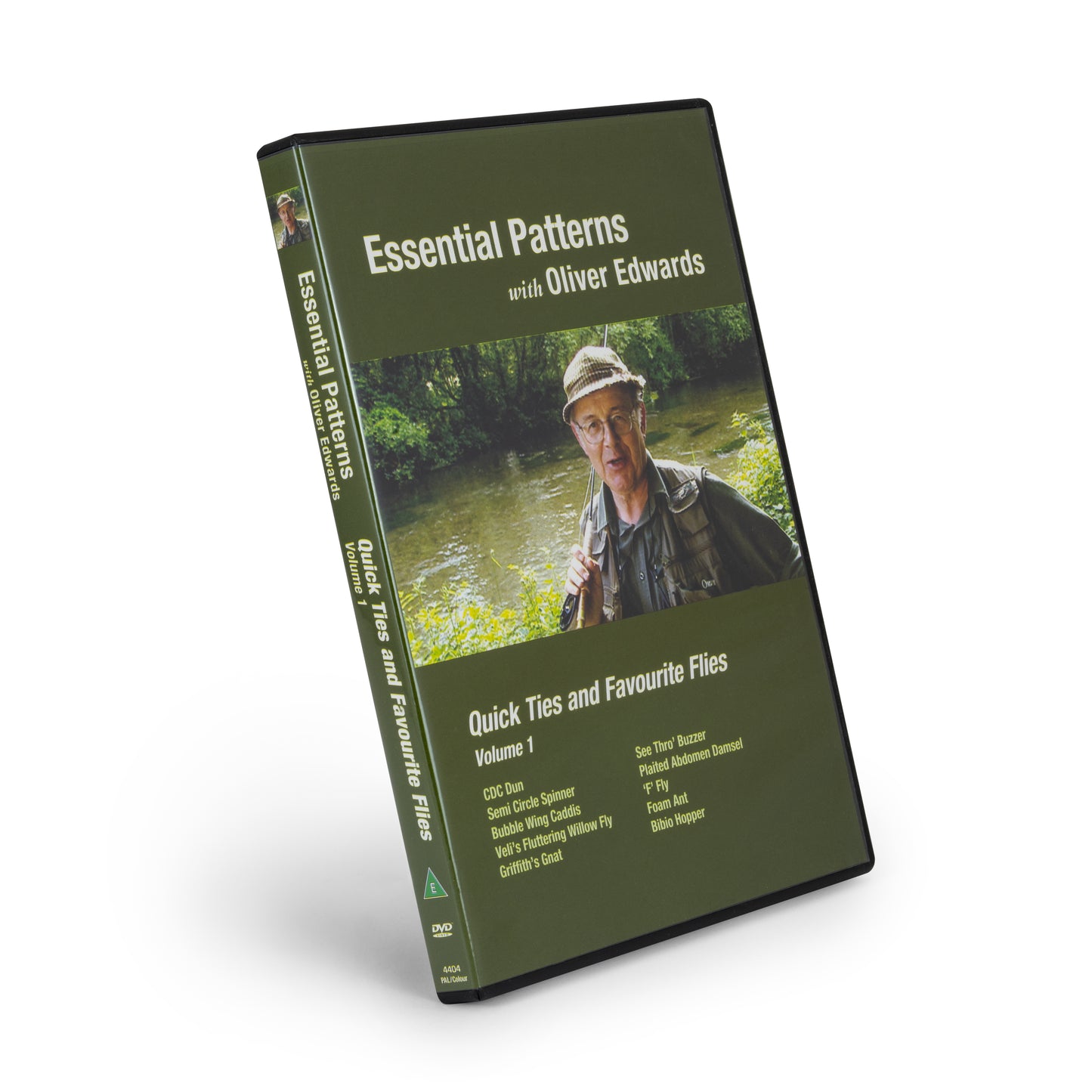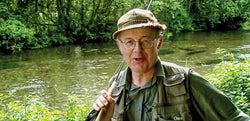Essential Patterns
Essential Patterns Volume 1 – Quick Ties and Favourite Flies - Run Time 2 hours 50 mins
Essential Patterns Volume 1 – Quick Ties and Favourite Flies - Run Time 2 hours 50 mins
Couldn't load pickup availability
There’s nothing quite like catching a fish on a fly that you have tied yourself. If you have not done this, you are missing one of the greatest thrills of fly fishing. These programmes are all about fly tying. Like the Essential Skills programmes, the techniques are shown simply, clearly and in great detail. Even a relative newcomer to fly tying, with a little patience and perseverance can master the advanced techniques. Just follow what I do step by step and it is easy. Even for the more accomplished fly tyer, there are some tricks of the trade that I am sure you will not have tried before.
Tying patterns which have a good reputation as fish catchers and ones which can be adapted to your local river or still water will unquestionably put you in contact with more fish. Moreover, there is simply no comparison between catching a fish on flies that you have tied and catching on ones you buy.
Tying well established and field proven patterns from written recipes is common practice, and goes back at least a couple of centuries, but now with DVD, we have the ultimate in fly tying instruction. These DVDs really come into their own if you can set up your DVD player, or use a PC with a DVD player next to your tying bench, then you can follow the tying step by step.

As with all Essential Skills programmes, these Essential Patterns DVDs show the techniques clearly and in great detail. Pretty soon you'll be amazed at your new found tying skills.
Choosing just ten patterns from the plethora of patterns available worldwide was not easy. The original rationale was that each fly should be quick to tie, which by definition implies few materials and techniques. I eventually decided against this, as I know that many fly tyers enjoy a challenge, nevertheless, a few are quick ties. Some of the patterns are from my own vice, others from internationally renowned fly fishers. However, all are great fish catchers and all have a permanent home in my fly boxes.


My selection process resulted in seven patterns, leaving me to choose three from the general category - those which cover many insect Orders, yet nothing specific. Marjan Fratnik's 'F' Fly was always an obvious choice for the quick tie category.

The Foam Ant also neatly falls into this general category and is a firm favourite of mine, but don't leave it in your fly box waiting for the day you witness a fall of flying ants, you'll probably die first! Its bulbous abdomen and head shouts "I'm soft and juicy come and eat me". So try this pattern anytime during the heat of summer, as it copies a whole host of small black drop-ins.

The last general pattern, while strictly of still water origin, essentially from the large UK reservoirs, can also be a very successful river pattern when tied in small sizes. In fact on a recent trip to Iceland, river fishing for large brown trout (up to 24 inches, some even longer!), this fly proved to be a devastatingly effective pattern. This is my version of the well known Hopper (for American viewers, nothing at all to do with your Hoppers i.e. Grasshoppers.)

The Hopper pattern I demonstrate in this DVD is a version of that other great still water fly, the Bibio. The addition of fine rubber legs in front of the hackle, instead of the usual much more fragile knotted pheasant tail fibres behind the hackle, gives this pattern new life and action. The six or seven rubber legs waggle and jiggle in a very tantalising way as the fly breaks into the meniscus of a good wave as it dibbles towards the boat. With the addition of the rubber legs it is now a very robust fly.
I'm sure you'll have great fun tying these patterns and I'm equally sure that you'll master these techniques in no time at all. Remember though these patterns are not 'Tablets of Stone', experiment with the techniques and particularly with the materials. I'm sure that pretty soon you'll be creating your own patterns. Who knows, you may even discover a new technique?

The final choice is as follows:
Ephemeroptera (Mayfly Group)
CDC Dun
Semi Circle Spinner
Trichoptera (Caddisfly Group)
Bubble Wing Caddis
Plecoptera (Stonefly Group)
Veli's Fluttering Willow Fly
Diptera (True Fly Group)
Griffith's Gnat
See Thro' Buzzer
Odonata (Dragonfly / Damselfly Group)
Plaited Abdomen Damsel
General Patterns
'F' Fly
Foam Ant
Bibio Hopper
DVD Regions
DVD Regions
DVDs are produced in both PAL (European) and NTSC (US) television formats and all DVD regions are supported. We will dispatch your DVDs in the format and region code that corresponds to your shipping address.
Shipping
Shipping
Packages are sent Royal Mail 1st class within the UK or by Airmail if being shipped outside the UK. Packages over £60 are sent either signed, or tracked / signed for delivery.
As a guide, post and packing for a single DVD to a destination on the UK mainland or Northern Ireland costs £1.99, a full set of 8 DVDs will be sent signed for delivery in the UK, the post and packing is £4.99.
International post and packing ranges from £3.99 up to £16.99 for the international tracked and signed for service for orders over £60.
Delivery times vary depending on where the goods are being sent, we cannot guarantee delivery time; rough guide for the UK is 1 to 3 days from dispatch. International orders 5 to 12 business days from order depending on location.
Postage is calculated by weight and destination at checkout.
Learn-to-flyfish endeavour to ship orders by the following working day (working day Monday to Friday). Please note - exceptionally busy times, e.g. Christmas, Bank Holidays, first day after the weekend, there could be a delay with dispatch depending on the volume of orders.
You will receive an email confirming when your order is physically dispatched. (Make sure when ordering your email is correct.) If no Email has been received within 48 hours check your Spam Folder.
Force Majeure. Learn-to-flyfish will not be liable for performance delays nor for non-performance of 3rd party due to causes beyond reasonable control.
If you have any questions, please contact us by email info@learn-to-flyfish.com
Last updated 15 06 22


